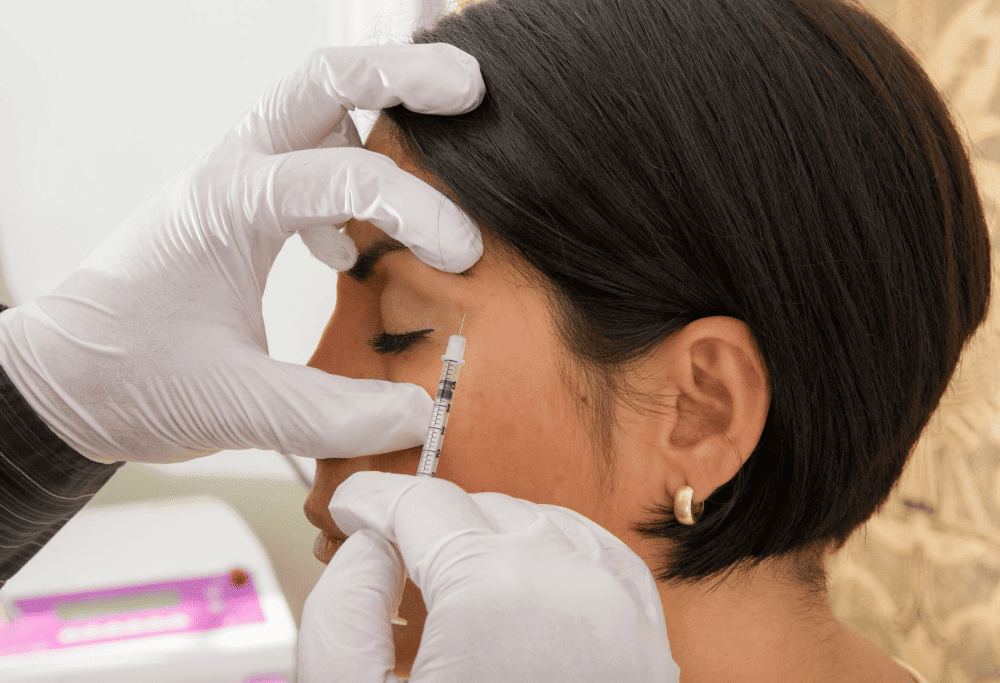blog
Botox for Migraines: How Does It Work?

Jun 22 2023
Reading Time: 4 Minutes
Author: Patricia Pezzano
Did you know that Botox injections can help treat migraines?
Consider yourself lucky if you’re not in the market for chronic migraine help. This condition is an incredibly common and debilitating problem that affects millions of Canadians, reducing their quality of life and putting immense pressure on our healthcare system.
While migraine sufferers have long been told their only option is to take an over-the-counter painkiller and wait out the headache in a dark room, Botox has emerged as a potential solution to these stubborn and painful headaches. But how does it work?
Keep reading to learn more.
The Basics of Botox For Migraines
In 2010, the FDA approved the use of Botox injections to treat and prevent chronic migraines in adults. Clinical evidence supported this recommendation, suggesting the treatment be administered every 12 weeks (approximately every three months) to help improve symptoms.
In 2011, Health Canada followed suit and approved Botox injections as a viable option for treating chronic migraines.
This treatment option is recommended for individuals who experience migraines on 15 or more days per month, with each headache lasting at least four hours.

When treating migraines, Botox is injected in small amounts into specific muscles of the head and neck. The toxin works by blocking the release of certain chemicals involved in pain transmission, thereby reducing the frequency and intensity of migraines. The exact injection sites may vary depending on the individual’s symptoms and pain patterns.
The effectiveness of Botox for migraines varies among individuals, but as with all cosmetic procedures, regular treatment cycles are necessary to maintain the benefits and prevent the recurrence of migraines.
Note: Botox for migraines is not suitable for everyone. It’s important to inform your healthcare provider about your medical history, including any muscle or nerve conditions, allergies, or previous reactions to botulinum toxin. This treatment option is only approved for those who suffer from chronic migraines and is not the recommended solution for treating other types of headaches.
The Benefits of Botox Injections For Migraines
Once your doctor gives you the go ahead, you may notice an improvement in your migraine symptoms, such as:
- Reduced sensitivity to light and sound;
- Reduced vomiting and pain; and
- Reduced nausea.
Getting Botox injections to treat your chronic migraine is a safe treatment method that can also be combined with other medications used to treat headache symptoms for longer-lasting relief without complications.
Botox also helps prevent migraine episodes from happening as long as the botulism toxin is in effect. This is why regular appointments with your aesthetic practitioner are recommended every three months for maximum relief.
When done correctly, Botox injections for migraines should improve the overall quality of life for patients by alleviating symptoms and giving them peace of mind.
The Side Effects of Botox for Migraines
While serious complications from Botox treatments are few and far between, you should still be aware of the possible side effects.
Some of the side effects of Botox for migraines include:
- Neck pain or muscle stiffness at the injection site
- Muscle spasms
- Headaches
- Droopy eyelids
Some serious side effects you should watch for include:
- Allergic reactions
- Vision problems
- Muscle weakness
- Difficulty breathing, speaking, or swallowing
- Bladder control problems
These more serious side effects are a sign that the toxin has spread from the location of the injection to another part of your body. While extremely rare, it’s crucial to contact your doctor immediately and seek medical assistance.

How Long Does Botox Treatment Last?
Botox injections for migraines are temporary because the substance injected into your muscles is eventually metabolized by your body. So, if you want to maintain results, you’ll need to schedule regular appointments with your aesthetic practitioner.
If you’re not happy with your treatment plan, you can stop anytime. However, your doctor might be the one who recommends how long you should get Botox injections, depending on the severity of your symptoms and how your body responds to the substance.
You should expect it to take a few weeks after your first treatment to see improvement—Botox treatments for chronic migraines are not instantaneous. While it depends on each individual, some patients may require longer to experience relief.
Does OHIP Cover Botox for Migraines?
There is some debate as to whether Botox injections for migraines are covered under the Ontario Health Insurance Plan (OHIP).
Unfortunately, in most cases the answer is no. Botox treatment for migraines requires a referral from your doctor, but is then conducted by a private practitioner, essentially taking it out of the realm of what OHIP typically covers.
However, most private and public insurance plans may cover part or all of the costs associated with your treatment. Just make sure to look into your insurance plan to see how much is covered before booking Botox injection sessions.
Get World-Class Botox Injection Training
As you’ve learned, Botox for migraines is an effective treatment—that’s why medical professionals looking for alternative ways to treat their patients should get Botox certified. If offering this type of service sounds like something that interests you, then you’ve come to the right place.
APT Injection Training specializes in Botox injection training, with courses that offer both certificates of attendance and true certifications. Our students are closely monitored by industry experts and undergo hands-on training to help them build confidence when it comes to Botox injections for migraines and other cosmetic treatments.
Get trained and accredited now! Contact us today to learn more.
Tips to be a
Successful Injector!
Free E-Book download
 Student Log in
Student Log in
 1267 Cornwall Rd, Unit 300, Oakville, Ontario L6J 7T5
1267 Cornwall Rd, Unit 300, Oakville, Ontario L6J 7T5

 (289) 271-5718
(289) 271-5718




































